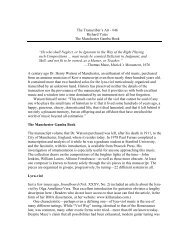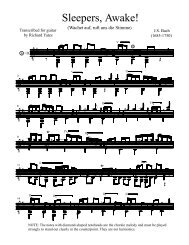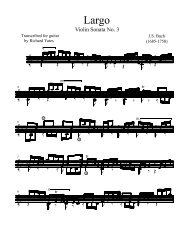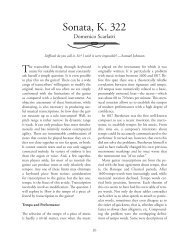Matthaeus Waissel's Lute Tutorial - Sarge Gerbode's Lute Page
Matthaeus Waissel's Lute Tutorial - Sarge Gerbode's Lute Page
Matthaeus Waissel's Lute Tutorial - Sarge Gerbode's Lute Page
You also want an ePaper? Increase the reach of your titles
YUMPU automatically turns print PDFs into web optimized ePapers that Google loves.
Examples of where you must pluck<br />
twice in a row with the thumb in coloraturas<br />
Examples of where you must play<br />
several bass notes in a row with the thumb<br />
How to tell if strings are true or false<br />
Take a string as long as you need for the lute, grasp it at one end between two fingers of the left hand,<br />
likewise between two fingers of the right hand at the other end, draw it rather taut, and pluck it with<br />
the ring finger of the right hand. Look carefully along the length of the string. If it vibrates nicely, as<br />
if it were two strings, then it is good and proper for the lute. But if it vibrates in a muddled fashion<br />
and quavers as if there were three or four strings, it is false and unfit for the lute, since it will not hold<br />
pitch and can never be accurately tuned to the other strings.<br />
First tune the 5 as high as it will tolerate.<br />
Then tune the A an octave 15 below the 5.<br />
Stop the C and tune the 3 to how it sounds.<br />
Stop the n and tune the 1 to how it sounds.<br />
Stop the f and tune the 4 to how it sounds.<br />
Stop the o and tune the 2 to how it sounds.<br />
How to tune the lute<br />
15<br />
Should be “two octaves”.


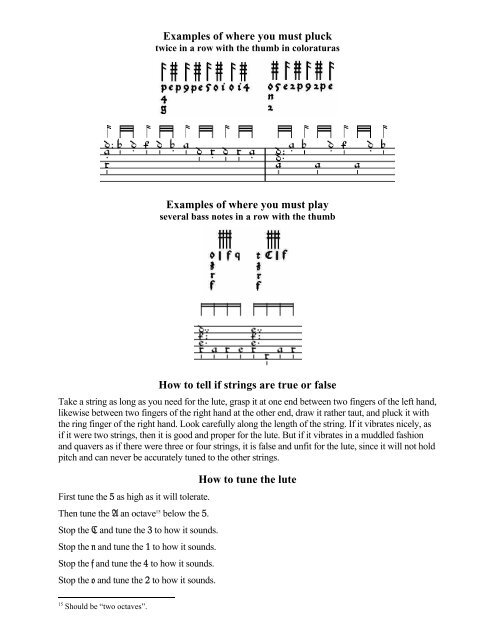


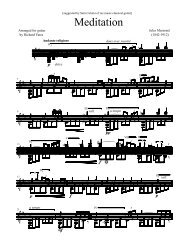
![Finale 2005b - [BWV846-Prelude in C.MUS]](https://img.yumpu.com/43978887/1/190x245/finale-2005b-bwv846-prelude-in-cmus.jpg?quality=85)
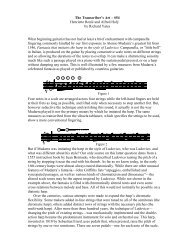
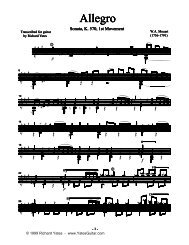

![Finale 2005b - [AirG-TAB.MUS] - Richard Yates Classical Guitar ...](https://img.yumpu.com/37104901/1/190x245/finale-2005b-airg-tabmus-richard-yates-classical-guitar-.jpg?quality=85)

